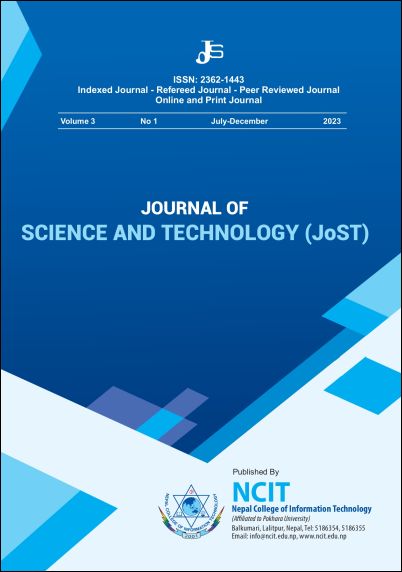Credit Card Fraud Detection using Heterogeneous Ensemble Techniques
DOI:
https://doi.org/10.3126/jost.v3i1.69063Keywords:
Credit Card Fraud Detection, Ensemble Techniques, Feature Selection, Heterogeneous, K-Nearest Neighbor (KNN), Artificial Neural Network (ANN), Support Vector Machine (SVM)Abstract
Credit card fraud is a major issue in the financial sector, necessitating advanced detection methods to minimize financial losses and improve security. Traditional techniques often struggle with the high dimensionality of transaction data and the imbalanced nature of fraud datasets. To effectively detect fraudulent transactions, this paper proposes a heterogeneous ensemble learning approach that combines the best selected k features and voting techniques with SVM, ANN, and k-NN classifiers. Heterogeneous ensembles combine classifiers that utilize different algorithms, representations, or even feature sets. This diversity allows the ensemble to capture a wider range of patterns and relationships in the unseen data. The proposed ensemble model outperforms the individual classifiers, demonstrating the superior performance of the ensemble in mitigating challenges associated with credit card fraud detection. The ensemble performs better than existing models in terms of accuracy, precision, recall, and F0.1 score metrics. The recall rate, which is crucial for spotting fraudulent transactions, is improved by the ensemble technique, which effectively balances the trade-offs between precision and recall. The results indicate that feature selection using k-best significantly enhances the performance of individual classifiers and soft-voting ensemble methods. The findings presented lay the groundwork for future advancements in the development of more robust and adaptive fraud detection systems. The improved performance shows that the proposed approach is effective in detecting credit card fraud, and it has the potential to be implemented in the real world.




